Results of implementing Vchasno.EDO




Digital transformation in higher education: what should be considered?
 Education and science are always about development and innovation. The nationwide trend of the last five years has been the active digitization of services, processes, and document flow. In the field of education, the EDEBO (Unified State Electronic Database on Education) system has already been implemented at the state level. It is the main source of data and a tool for managing processes such as admission, transfer, expulsion, academic leave, publications, teacher training, etc.
Education and science are always about development and innovation. The nationwide trend of the last five years has been the active digitization of services, processes, and document flow. In the field of education, the EDEBO (Unified State Electronic Database on Education) system has already been implemented at the state level. It is the main source of data and a tool for managing processes such as admission, transfer, expulsion, academic leave, publications, teacher training, etc.
However, all these processes require documentary confirmation: the issuance of orders, memos, meeting minutes, and other supporting documentation. Accordingly, the digitization of document flow is a critically important component of the effective operation of an educational institution.
In the university-student relationship, the university performs a service function: it provides educational services to the student, regardless of whether the customer is the state or the parents. Both the state and the universities themselves must move towards maximizing the simplification of access to services for the end user.
Students should not have to waste time writing applications by hand or visiting the dean’s office — everything should be available online in a few clicks. Similarly, teachers should not have to waste hours signing dozens of paper documents or filling out numerous forms, often with duplicate data.
Reasons for switching to electronic document management
The main goal of switching to electronic document management for Kyiv Aviation is to significantly simplify and speed up the process of approving and signing documents for both employees and contractors.
Since the university buildings are located at a considerable distance from each other, the delivery of documents from the initiator to the approver or signatory could previously take 15-20 minutes.
Before the introduction of the Vchasno service, 99% of the university’s documents were signed in paper form, and previous attempts to switch to EDM were mostly unsuccessful. The implementation of electronic document management began in July–August 2024 during the admission campaign.
The first to experience the benefits of the “paperless solution” were first-year students and their parents, as we used the Vchasno service to sign study agreements. During this campaign, we managed to sign about 1,000 documents.
Starting in September, we gradually began to implement electronic internal documents, as well as other types of external documents.
What documents have been converted to electronic format?
At the Kyiv Aviation Institute State University, up to 90% of the main documents have been converted to electronic format. In particular, these are internal documents:

- orders;
- memos;
- decrees;
- regulatory documents (regulations, job descriptions);
- incoming correspondence;
- citizen appeals.
As well as external documents:
- contracts (with students, tenants, contractors);
- acts of services rendered;
- statements from students;
- outgoing letters (most of which are registered in Vchasno as internal and then sent by email);
- additional agreements to contracts — in connection with the reorganization, about 10000 such agreements have already been signed with various counterparties;
- qualification (diploma) works — signed by students, scientific supervisors, and teachers in Vchasno. Approximately 1500 theses have already been signed, each with 4–5 signatories.
Some of the above documents, despite being signed electronically, are additionally printed for storage in paper form due to long-term archival storage requirements.
On average, we process 1000 – 1500 documents per month (internal and external combined). This does not include the signing of additional agreements during reorganization.
Integration of Vchasno and Google AppScript
Google Spreadsheet is connected to AppScript, which is integrated with the Vchasno service. Thanks to this integration, incoming correspondence is automatically uploaded to the system.
Office staff add documents received by mail or email through a separate Google spreadsheet. Each document automatically receives an incoming number and is transferred to Vchasno. There, it is immediately seen by the person in charge — the coordinator who distributes incoming documents at the university.
Integration with the Master ERP system is also currently underway.
How has digital transformation affected KAI's processes and resources?
Every month, between 1,000 and 1,500 documents pass through the system, not including additional agreements. Due to the reorganization of the university, more than 20,000 such agreements had to be signed — 10,000 have been signed so far, with the same number still awaiting signature.
 The figures speak for themselves (savings calculated using the Vchasno methodology):
The figures speak for themselves (savings calculated using the Vchasno methodology):
- more than 4 million hryvnia saved;
- 50 trees and over 20 000 liters of water saved.
Students and their parents can sign documents online, without having to visit the university in person. This significantly reduces the workload on university departments and improves interaction with service recipients.
We see a significant reduction in paper consumption thanks to document versioning. If errors are found at the approval stage, in paper format this would mean a complete reprint, whereas in the Vchasno office it is simply a matter of replacing the file. EDO really does reduce costs.
We are now actively working to make checking documents for signature or approval a habit. Our goal is to complete the document route as quickly as possible, without the need for additional reminders.
Find out how much your business will save with Vchasno. Paper Cost Calculator is a tool that will help you find out how much you actually spend on documents.
How did employees react to the transition to electronic document management?
We expected more resistance from the faculties and less from the administrative departments. However, in practice, the implementation went faster in the faculties. “Vchasno.EDO” significantly simplified their work — there was no longer a need to physically “deliver” documents to the administrative building, where approvers sit on different floors and in different offices.
Nevertheless, there was still a negative reaction, but it was caused by the previous unsuccessful experience of implementing EDO several years ago. Our initiative was perceived as another “one-off campaign” that would come to nothing in a month or two, so some people saw no point in spending time on it.
At the same time, we had our change leaders — employees who not only supported us but also actively initiated the expansion of the system’s use: introducing new types of documents, writing instructions, or implementing new features that they needed.
If at the beginning we heard, “Let’s not do it now,” now the same departments are asking to be added to the system — because other colleagues no longer accept paper documents, only those submitted through Vchasno.

Student response to electronic document management
Students can submit applications online, without having to visit the dean’s office in person, as was previously the case. They also no longer print their qualification (diploma) papers, as the university has switched to electronic signing of such documents in Vchasno.
We have less direct contact with students — they usually use the service 2–3 times a year: to submit an application, sign an additional agreement, or receive a diploma.
Unlike employees who work with the service on a daily basis, students interact with it only occasionally. Therefore, the most difficulties usually arise not with the use of Vchasno, but with the availability or configuration of a qualified electronic signature (QES).
The problem with QES is gradually disappearing: during admission, most students already use QES to confirm their place of study, so in the future, the availability of an electronic signature will no longer be a problem for them.
In general, resistance from students has been minimal. Electronic document management gives them obvious advantages — the ability to quickly submit an application or sign a document without being physically present, without the need to print or write it by hand.

The transition of counterparties to Vchasno: how it happened in practice
The first to experience digitization were counterparties who receive services from KAI — for example, those who rent premises or parking spaces. These are usually contracts that are concluded in two copies with a certain frequency: monthly or even several times a month (for example, for one-time cases).
The first stage was the introduction of electronic signing of contracts in the property management department. Subsequently, invoices and acts accompanying these contracts were also added. The transition went quite smoothly and lasted about a month.
Only a few counterparties had to be personally explained how to sign documents once. After that, everyone mastered the process and now works completely independently.
When it comes to contracts where KAI is the recipient of services or goods, the situation is a bit more complicated. Not all suppliers or service providers are ready to work with electronic signatures — especially if we don’t have a choice because of tenders or the counterparty’s monopoly position.
Despite this, the process is actively ongoing. For example, all procurement documents of the Digital Transformation Department were signed exclusively in electronic form — including contracts for the purchase of access to the state education database (EDEBO).
How did digital tools support the work of the CAI during the full-scale invasion?
There are no exact quantitative estimates, but qualitative changes are evident. The use of digital services made it possible to:

- Optimize the transfer of information and documents between departments — instead of people performing courier functions, information is transferred instantly.
- Significantly reduce the time spent searching for the necessary documents — now it takes a few seconds in a digital archive, rather than long searches through folders.
- Work with documents anywhere — even from a mobile phone.
- Review and simplify some of the outdated business processes that have become redundant or too burdensome in the online reality.
In times of instability, when staff work remotely or in different locations, the availability of flexible electronic solutions has become not just an advantage, but a critical condition for stability.
How important is innovation for development and growth?
- Document flow becomes more transparent.
- The problem of physical delivery of documents between departments disappears.
- The search for documents is significantly accelerated.
- It becomes possible to sign documents with contractors quickly and without additional costs.
- Costs are optimized — both material and time.
Plans for further digitalization
Our vision is the full integration of key systems: ERP, CRM, and educational process management systems. It is necessary to ensure that information or documents created in one system are synchronized or automatically transferred to other systems without duplicating actions.
In addition, it is important to have high-quality documentation of internal instructions for using and configuring digital services. This will maintain stability even when the digital transformation team moves on to other projects and support for already implemented solutions is transferred to internal service teams.
We are moving step by step through three main phases of digital development:
-
1Getting things online —converting analog information into digital format.
-
2Digitalization —automating and optimizing processes that have already been converted to electronic form.
-
3Digital transformation —deep integration of services with each other and the transition from a paper-based to a digital culture.
Each stage has its own challenges, but gradual progress yields stable results, changing both internal processes and interaction with users.
Get more information about Vchasno
Contact us! Learn how to quickly implement e-document workflow in your company and reduce costs and team time for documents processing.









